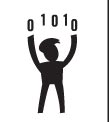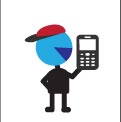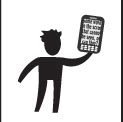SLJ's 2011 Technology Survey: Things Are Changing. Fast.
Despite the funding challenges nearly all school libraries face, many media specialists are optimistic about the role of technology in the school library, according to SLJ’s 2011 Technology Survey. Maribel Castro, a high school librarian, in Lubbock, TX, spoke for many school librarians when she wrote that even though her library is behind the tech curve, she still feels that “we are at the cusp of great things.”
But in spite of the general optimism, others point to some significant obstacles: technological innovations are often hampered by poor funding, lack of time, and unsupportive administrators. “I feel like I am blocked by my district at nearly every turn,” says an Oklahoma elementary school librarian.
Most of the excitement about the future stems from the emergence of ebooks and mobile devices. Combine these hot developments with dynamo media specialists who see themselves as their school or district tech leaders, and we may well be on the verge of a new era—at least for some schools. (For more on our survey, see “Not Just the Lucky Ones,” )
 | |||
 |  |  |  |
 |  |  |  |
Chart designs by Mark Tuchman
Ebooks: we’re investigating
The number of ebooks in school libraries is growing, with almost a third (31 percent) of respondents saying they now have them in their collections. Last year alone, K–12 school libraries nationwide spent an average of $939 each on digital books, ranging from a low of $390 at the elementary school level to $1,749 in high schools. During the coming two years, an additional 28 percent of libraries expect to add ebooks, while 43 percent say they may consider adding them to their collections (see chart 3-B). Does ebook acceptance vary by region? A whopping 78 percent of school librarians in the Northeast that are currently without ebooks say they definitely plan to purchase them during the next two years.
While 63 percent of those surveyed say that they can’t afford to buy digital books, the biggest obstacle to ebook acquisition is libraries’ lack of digital devices (67 percent, see chart 3-C). Digital rights management is more of an issue for high school librarians (31 percent) and for librarians under age 35 (36 percent).
Competing platforms are another major hurdle. “Right now I have too many separate ways to access our ebooks: ABC-CLIO, Gale, Follett Shelf,” says Julie Wales of McNair Magnet School, a middle school in Rockledge, FL. Survey respondents report that the array of ereaders is also daunting, vendor practices aren’t school friendly, and there are myriad administrative obstacles. “I cannot get Kindles because of Amazon’s cash-only business practice—no POs” writes Janet Kenney of Bristol Eastern High School in Connecticut.
While ebooks remain a source of confusion and curiosity for many librarians, others report that they’re launching ebook pilot projects with circulating Kindle or Nook devices. “With regards to ebooks, I think they are a huge part of the future of libraries... and I’m not scared of ebooks, I welcome them and will work to incorporate them into my library when I am able,” writes an elementary school librarian from Albany, NY. And if they don’t already have ebook programs in place, librarians often report that they’re in the process of negotiating with ebook vendors or applying for grant funding.
Probably the most startling fact about ebooks is where libraries expect to be in five years (see chart 3-A). School libraries predict ebook penetration to increase 14-fold by 2016, to 7.8 percent. To get there, libraries will need to shift a significant portion of their print budgets to the purchase of digital books.
Mobile devices: Turned off, put away?
About one-third of all K–12 students have a smartphone, iPod touch, iPad, tablet, or some other personal mobile device (see chart 2-A). Not surprisingly, the number rises with the grade level. The biggest divide is between public schools and private schools, where up to one-half of the kids have a mobile device. In public schools, that fraction drops to one-third.
While only 13 percent of students nationwide are allowed to use their mobile devices in school (chart 2-B), mobile usage, at least in the opinion of librarians, is a lot more nuanced—and contentious. Questions about mobile usage drew a wealth of anecdotal responses: “But some teachers including me do it anyway.” “They can use them for ‘educational’ purposes.” “Unfortunately not for academic purposes.” “We are behind on this one I think. So sad.”
Many of those who contributed comments believe that a ban on mobile devices is difficult—if not impossible—to enforce, while others think that a no-cellphone rule in schools would only result in students missing out on “a huge educational opportunity.”
Leaders in school, district
Overall, almost two-thirds of respondents (65 percent, chart 4-B) consider themselves tech leaders in their school or district. But there’s a generation gap. Only 57 percent of those over age 55 rate themselves as leaders, compared to 74 percent of those under 35.
In addition to the 84 percent that provide some instruction to the faculty, 62 percent of school librarians are also involved in planning their school’s technology resources (chart 4-C), with librarians in rural districts more involved in district planning. On a hopeful note, nearly 90 percent of those surveyed (see chart 4-D) say they’re responsible for recommending or purchasing technology for their school or district.
Brian Kenney (bkenney@mediasourceinc.com) is SLJ’s editor-in-chief.
RELATED
The job outlook in 2030: Librarians will be in demand
The job outlook in 2030: Librarians will be in demand
ALREADY A SUBSCRIBER? LOG IN
We are currently offering this content for free. Sign up now to activate your personal profile, where you can save articles for future viewing






Add Comment :-
Be the first reader to comment.
Comment Policy:
Comment should not be empty !!!